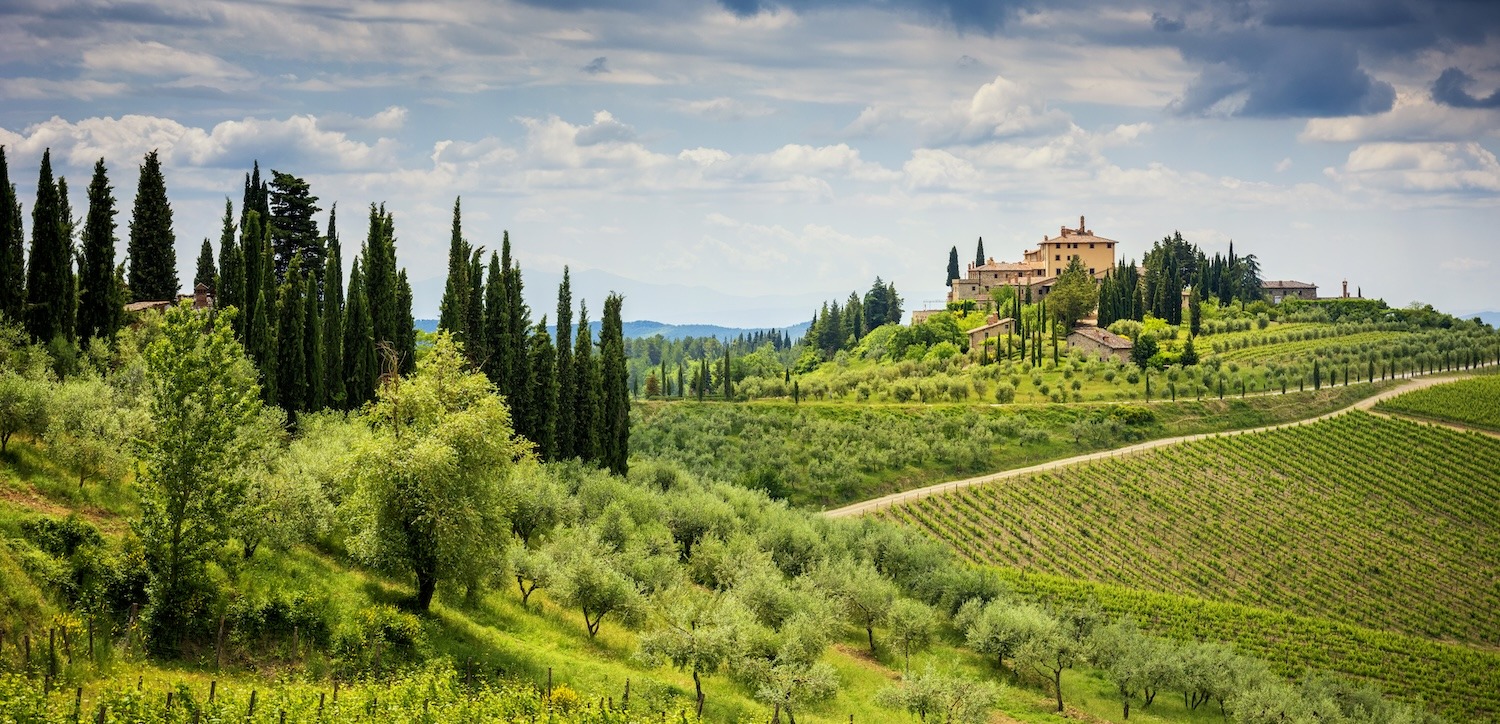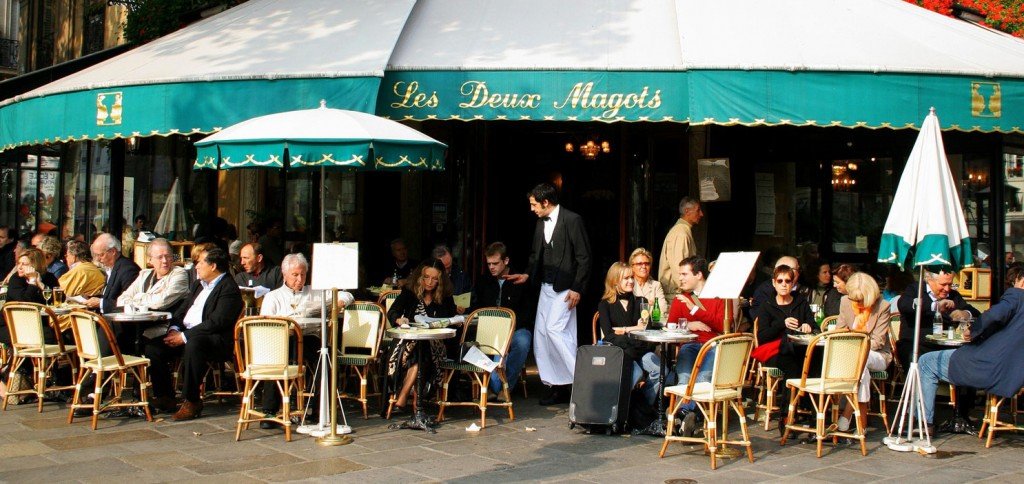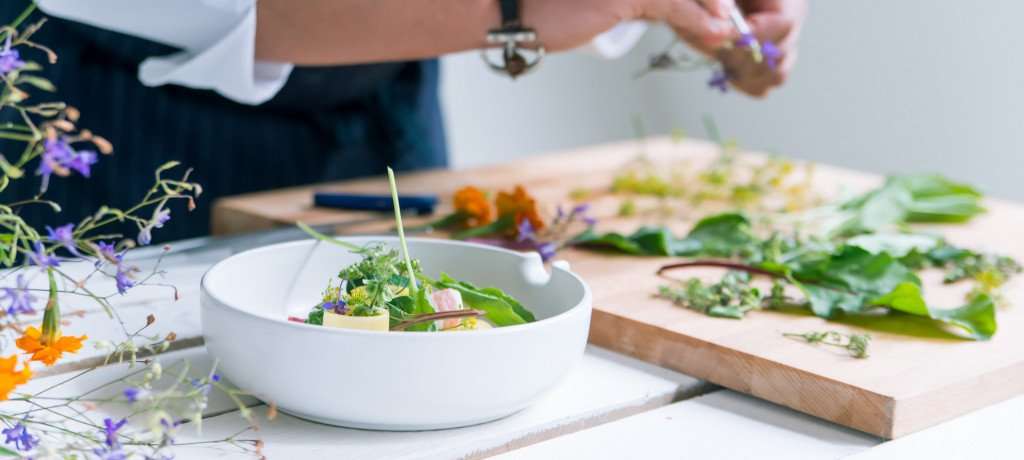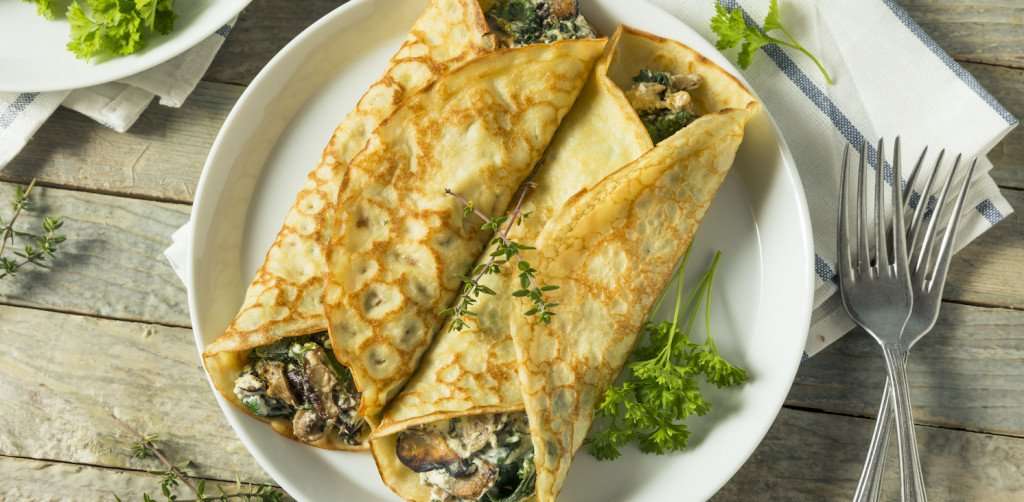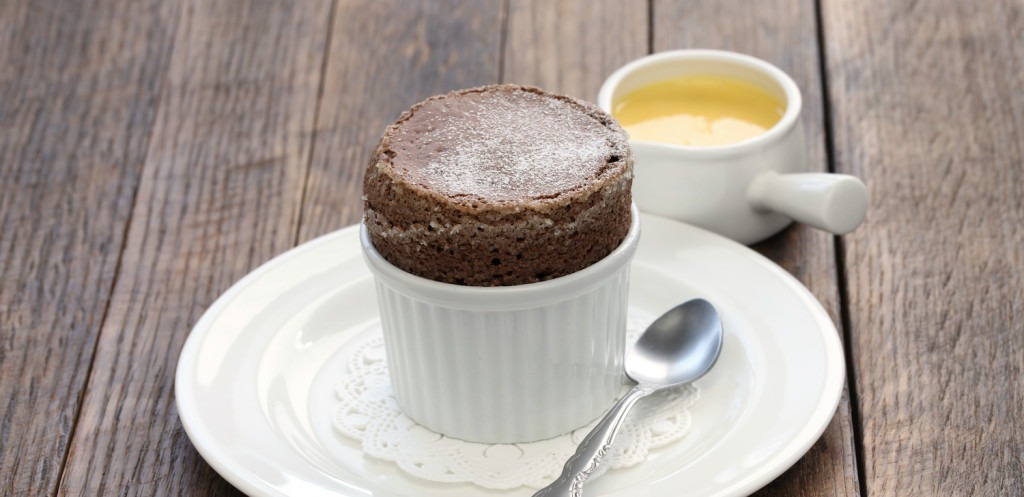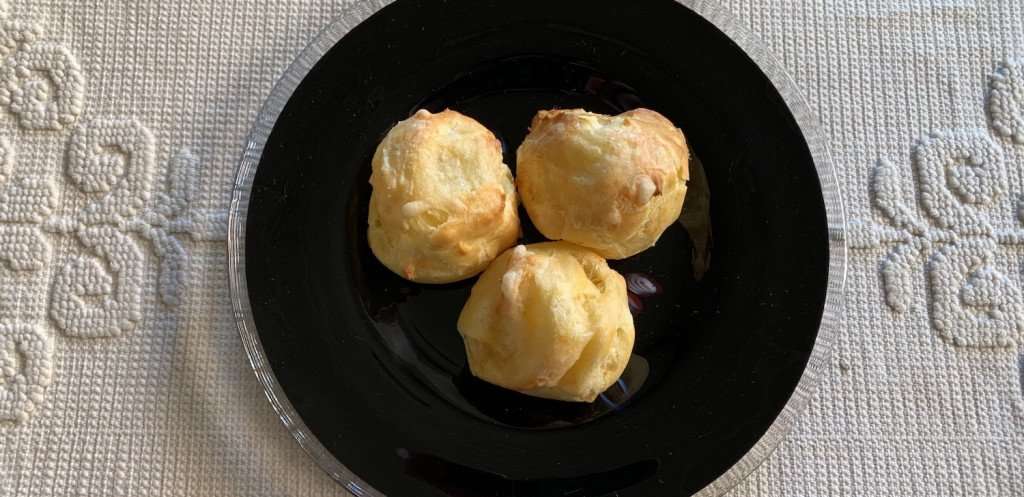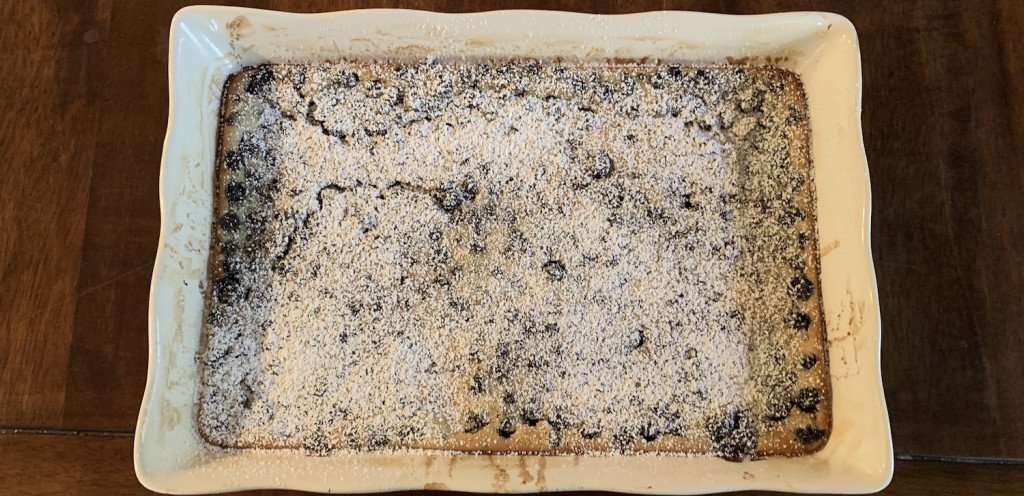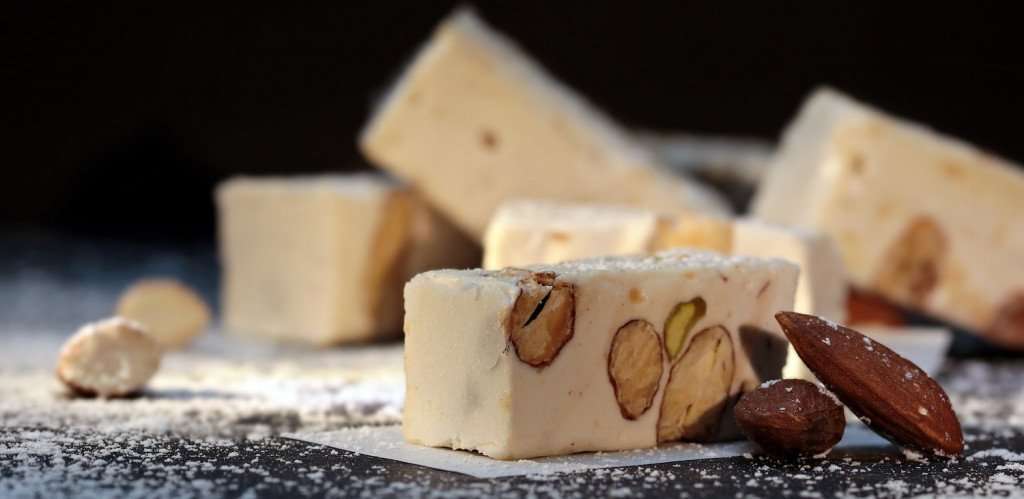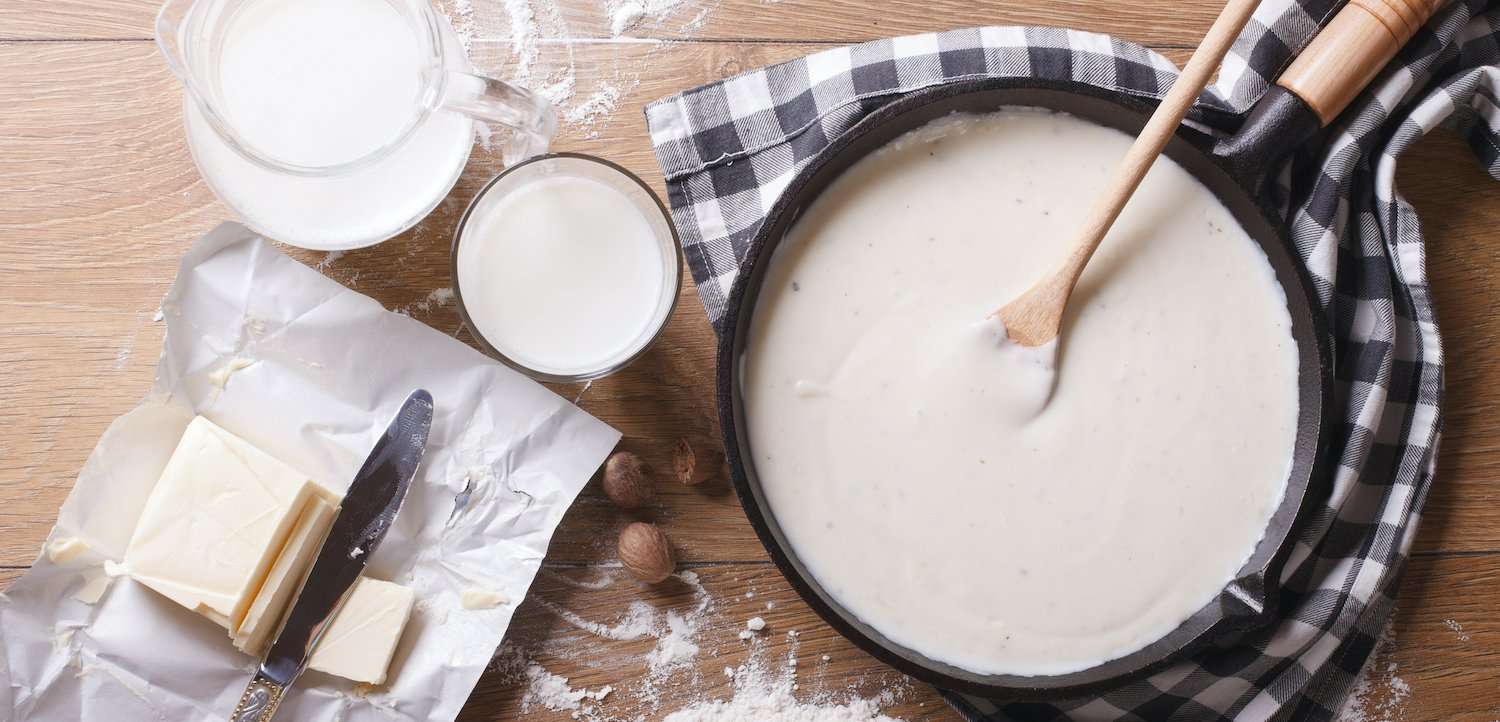
- The International Kitchen
- Recipes
- Béchamel, The Mother Sauce
Béchamel, The Mother Sauce
-
-
 I first encountered béchamel sauce, or besciamella in Italian, when I lived in Italy during my university days and was taught by my Italian boyfriend’s mother to make lasagna, or “pasta al forno” as it is called there. Yes, lasagna! In Italy lasagna (or lasagne, adopting the plural form), is not piled with ricotta and mozzarella, it is, rather, a delightful concoction of thinly rolled, flat egg noodles sandwiched between a combination of two sauces: a hearty meat and tomato sauce and a creamy besciamella. But as much as I love to credit Italians with culinary inventions, béchamel is more properly French. In fact, it is one of the famed “Mother Sauces” of French cuisine outlined by Auguste Escoffier in his nineteenth-century cookbook.
I first encountered béchamel sauce, or besciamella in Italian, when I lived in Italy during my university days and was taught by my Italian boyfriend’s mother to make lasagna, or “pasta al forno” as it is called there. Yes, lasagna! In Italy lasagna (or lasagne, adopting the plural form), is not piled with ricotta and mozzarella, it is, rather, a delightful concoction of thinly rolled, flat egg noodles sandwiched between a combination of two sauces: a hearty meat and tomato sauce and a creamy besciamella. But as much as I love to credit Italians with culinary inventions, béchamel is more properly French. In fact, it is one of the famed “Mother Sauces” of French cuisine outlined by Auguste Escoffier in his nineteenth-century cookbook. 
The “Mother” Sauces
The classic mother sauces are:
- Béchamel
- Velouté
- Espagnole
- Hollandaise
- Tomato
These mother sauces form the basis of the entire sauce world, including the “small” compound sauces. You will sometimes see mayonnaise listed as a mother sauce, but it is a cold sauce, and as such (according to Escoffier), a different entity entirely. As with all sauces, a béchamel is made with some form of roux (the thickening agent) and a liquid (in this case milk).
Why Béchamel?
 I most often use béchamel with pastas. Definitely with my authentic Italian recipe for pasta al forno, as already mentioned, but also for many “in bianco” preparations in which a white sauce is needed. It makes a great “white” lasagna (I recently made one with roasted sweet potatoes for Thanksgiving), and in the U.S. is often used to make creamy macaroni and cheese. What’s the different between this and an “Alfredo” sauce? Without going too deeply down the rabbit hole of what a real Alfredo sauce is (butter combined with hot pasta water and parmigiano-reggiano – that’s all folks!), what we most commonly think of as an Alfredo sauce in the U.S. is made with heavy cream, cheese, and no thickener. The result is a sauce that is much heavier than a classic béchamel.
I most often use béchamel with pastas. Definitely with my authentic Italian recipe for pasta al forno, as already mentioned, but also for many “in bianco” preparations in which a white sauce is needed. It makes a great “white” lasagna (I recently made one with roasted sweet potatoes for Thanksgiving), and in the U.S. is often used to make creamy macaroni and cheese. What’s the different between this and an “Alfredo” sauce? Without going too deeply down the rabbit hole of what a real Alfredo sauce is (butter combined with hot pasta water and parmigiano-reggiano – that’s all folks!), what we most commonly think of as an Alfredo sauce in the U.S. is made with heavy cream, cheese, and no thickener. The result is a sauce that is much heavier than a classic béchamel.  Other classic uses for a béchamel are in fish and egg dishes, in a croque monsieur sandwich, as part of a savory crepe filling, when making croquettes, or for the filling of a traditional pot pie (Thomas Keller–yes, Thomas Keller!–has a wonderful version). I add a little to sautéed spinach to make it creamed spinach and my children gobble it up! And in Greece you will find it in that classic dish, moussaka.
Other classic uses for a béchamel are in fish and egg dishes, in a croque monsieur sandwich, as part of a savory crepe filling, when making croquettes, or for the filling of a traditional pot pie (Thomas Keller–yes, Thomas Keller!–has a wonderful version). I add a little to sautéed spinach to make it creamed spinach and my children gobble it up! And in Greece you will find it in that classic dish, moussaka.  Make moussaka on the Greek island of Zakynthos. There are different variations of béchamel sauce. Escoffier’s classic recipe includes veal and onion which are cooked with the sauce and then strained out. Most modern recipes omit that step (and he also includes a version without it). Some recipes use a pale roux, cooked until it is slightly golden, whereas I use a white roux, which is cooked just until the flour is no longer raw. Many preparations include a thyme sprig, which I use when preparing certain dishes but not all, and almost all include ground nutmeg, which to me is essential. If you are using thyme or other herbs, they can be added at the end with the nutmeg or steeped into the hot milk for an hour or so before preparing the sauce.
Make moussaka on the Greek island of Zakynthos. There are different variations of béchamel sauce. Escoffier’s classic recipe includes veal and onion which are cooked with the sauce and then strained out. Most modern recipes omit that step (and he also includes a version without it). Some recipes use a pale roux, cooked until it is slightly golden, whereas I use a white roux, which is cooked just until the flour is no longer raw. Many preparations include a thyme sprig, which I use when preparing certain dishes but not all, and almost all include ground nutmeg, which to me is essential. If you are using thyme or other herbs, they can be added at the end with the nutmeg or steeped into the hot milk for an hour or so before preparing the sauce.
Experience, which plays such an important part in culinary work, is no where so necessary as in the preparation of sauces… – Auguste Escoffier
 A note on quantities: figure about equal portions of butter to flour when making the roux, and about 4 ounces of butter per 1 quart or liter of milk. The following recipe makes enough bechamel for a pan of lasagne in bianco (with plenty left over), so you can easily halve the recipe depending on what you are making. A note on making the roux: do not rush it. If you make your roux too quickly or over too high a heat, you damage the starches that absorb the liquid (and thereby thicken the sauce). With damaged starches you will need two or three times as much flour to form the correct consistency, whereas if you take your time at a lower heat, the roux will, in theory, be able to absorb up to six times its weight in liquid.
A note on quantities: figure about equal portions of butter to flour when making the roux, and about 4 ounces of butter per 1 quart or liter of milk. The following recipe makes enough bechamel for a pan of lasagne in bianco (with plenty left over), so you can easily halve the recipe depending on what you are making. A note on making the roux: do not rush it. If you make your roux too quickly or over too high a heat, you damage the starches that absorb the liquid (and thereby thicken the sauce). With damaged starches you will need two or three times as much flour to form the correct consistency, whereas if you take your time at a lower heat, the roux will, in theory, be able to absorb up to six times its weight in liquid.
Recipe for Béchamel Sauce (Besciamella)
-
-
-
-
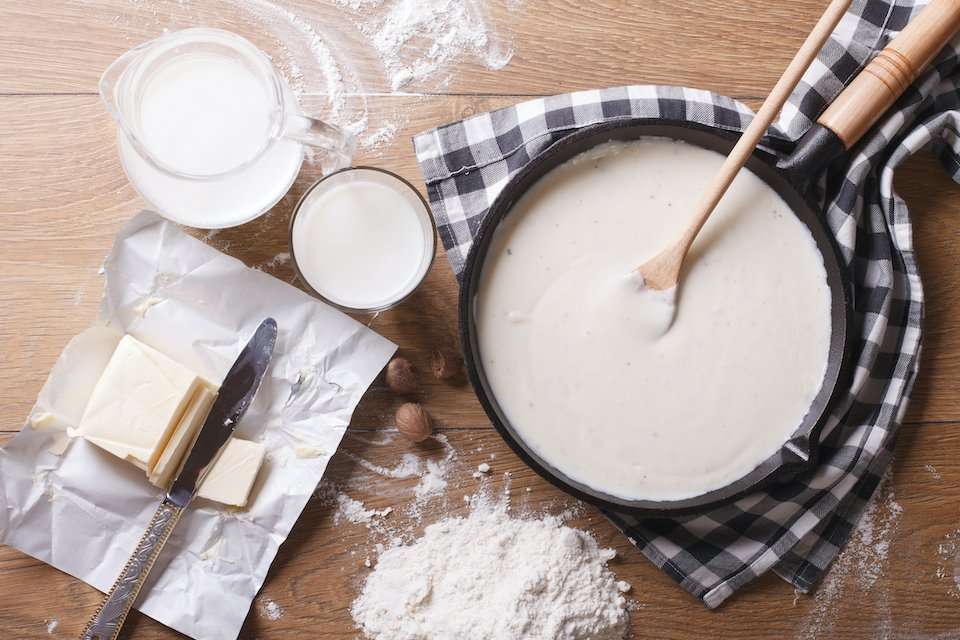
Ingredients
- 1 cup butter
- 1 cup flour
- 2 quarts whole milk
- pinch of salt
- freshly ground nutmeg
Instructions
- Melt the butter in a heavy-bottomed pan. When melted, add the flour and whisk in. Cook over medium-low heat for a several minutes, until the raw flour smell and taste are gone, but before the mixture takes on color.
- Set aside to cool for about 10 minutes.
- In the meantime, place the milk to heat in a separate pot. You will want it to be hot but not boiling.
- Return the roux to the fire and add the hot milk slowly, whisking briskly to avoid forming lumps.
- Cook the sauce for about 10 minutes, stirring frequently, or until it thickly coats the back of a spoon. Add the nutmeg and salt to taste. (I use about 1/2 to 3/4 tsp freshly ground nutmeg for this amount of béchamel).
- You can use the béchamel immediately, or save it for later use. If using later, transfer it to a bowl and cover with plastic wrap, pressing the wrap down to the surface so that a film does not form. (If you save for the next day, you will find the béchamel has become very thick in the refrigerator, but it will loosen up again once heated. Enjoy!
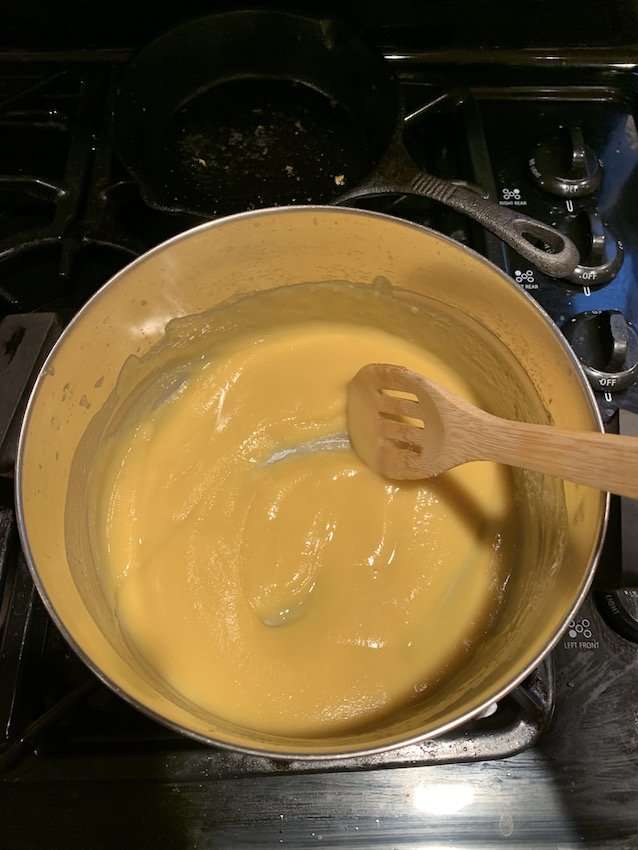
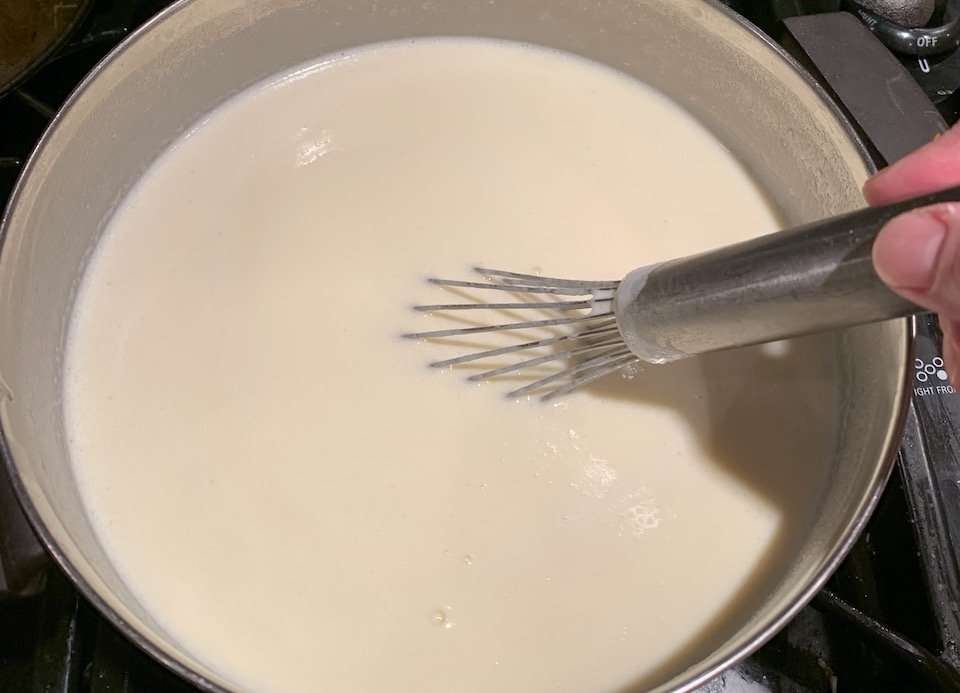
Sign up to Receive Our Newsletter
As well as travel tips, promotions, and information on our best cooking vacations.

recipes
Related Recipes
blog



